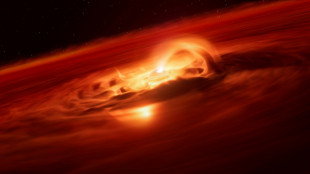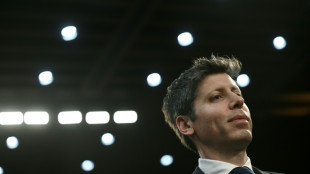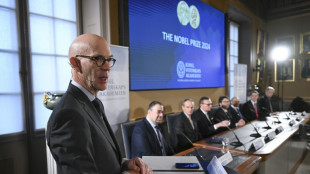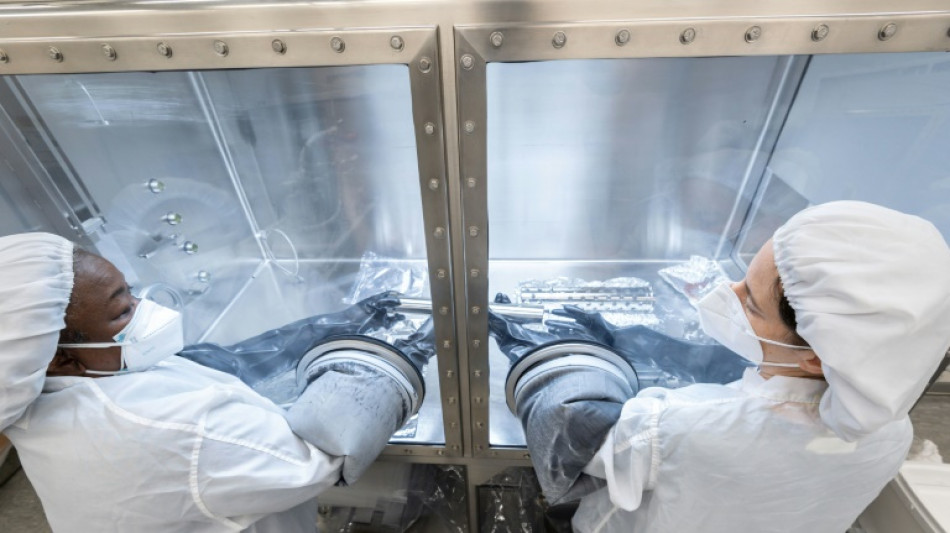
-
 US envoys head to Mideast as Trump warns Hamas against peace deal delay
US envoys head to Mideast as Trump warns Hamas against peace deal delay
-
In-form Inter sweep past Cremonese to join Serie A leaders

-
 Kolisi hopes Rugby Championship success makes South Africa 'walk tall' again
Kolisi hopes Rugby Championship success makes South Africa 'walk tall' again
-
Ex-All Black Nonu rolls back the years again as Toulon cruise past Pau

-
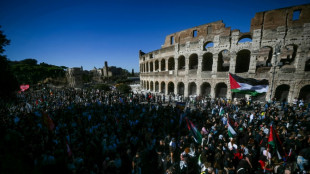 Hundreds of thousands turn out at pro-Palestinian marches in Europe
Hundreds of thousands turn out at pro-Palestinian marches in Europe
-
Vollering powers to European women's road race title

-
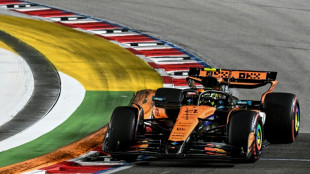 Struggling McLaren hit bump in the road on Singapore streets
Struggling McLaren hit bump in the road on Singapore streets
-
'We were treated like animals', deported Gaza flotilla activists say

-
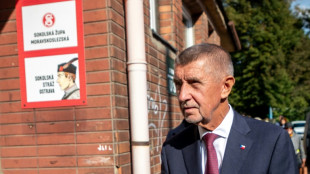 Czech billionaire ex-PM's party tops parliamentary vote
Czech billionaire ex-PM's party tops parliamentary vote
-
Trump enovys head to Egypt as Hamas agrees to free hostages
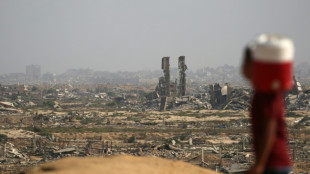
-
 Arsenal go top of Premier League as Man Utd ease pressure on Amorim
Arsenal go top of Premier League as Man Utd ease pressure on Amorim
-
Thousands attend banned Pride march in Hungarian city Pecs

-
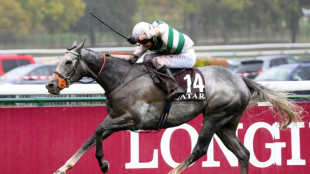 Consent gives Morris and Prescott another memorable Arc weekend
Consent gives Morris and Prescott another memorable Arc weekend
-
Georgian police fire tear gas as protesters try to enter presidential palace

-
 Vollering powers to European road race title
Vollering powers to European road race title
-
Reinach and Marx star as Springboks beat Argentina to retain Rugby Championship

-
 Russell celebrates 'amazing' Singapore pole as McLarens struggle
Russell celebrates 'amazing' Singapore pole as McLarens struggle
-
Czech billionaire ex-PM's party leads in parliamentary vote
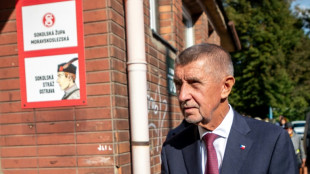
-
 South Africa edge Argentina to retain Rugby Championship
South Africa edge Argentina to retain Rugby Championship
-
'Everyone's older brother': Slipper bows out in Wallabies loss

-
 Thousands rally in Georgia election-day protest
Thousands rally in Georgia election-day protest
-
Sinner starts Shanghai defence in style as Zverev defies toe trouble

-
 Russell takes pole position for Singapore Grand Prix as McLaren struggle
Russell takes pole position for Singapore Grand Prix as McLaren struggle
-
Robertson praises All Blacks 'grit' in Australia win

-
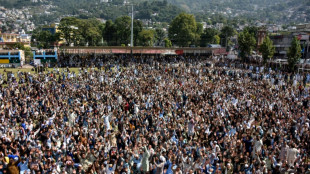 Government, protesters reach deal to end unrest in Pakistan's Kashmir
Government, protesters reach deal to end unrest in Pakistan's Kashmir
-
Kudus fires Spurs into second with win at Leeds

-
 Rival rallies in Madagascar after deadly Gen Z protests
Rival rallies in Madagascar after deadly Gen Z protests
-
Egypt opens one of Valley of the Kings' largest tombs to public
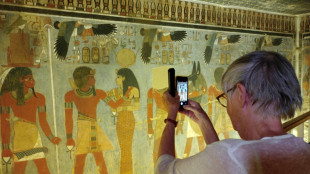
-
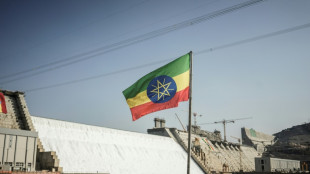 Ethiopia hits back at 'false' Egyptian claims over mega-dam
Ethiopia hits back at 'false' Egyptian claims over mega-dam
-
Sinner breezes past Altmaier to launch Shanghai title defence

-
 Czech ex-PM set to win vote, putting Ukraine aid in doubt
Czech ex-PM set to win vote, putting Ukraine aid in doubt
-
All Blacks down Wallabies to stay in Rugby Championship title hunt

-
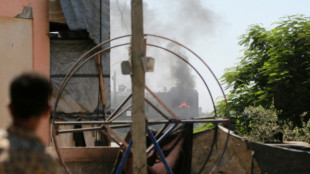 Gazans hail Trump ceasefire call as Hamas agrees to free hostages
Gazans hail Trump ceasefire call as Hamas agrees to free hostages
-
Zverev echoes Federer over tournaments 'favouring Sinner, Alcaraz'

-
 Yamal injury complicated, return date uncertain: Barca coach Flick
Yamal injury complicated, return date uncertain: Barca coach Flick
-
Conservative Takaichi set to be Japan's first woman PM

-
 Marsh ton powers Australia to T20 series win over New Zealand
Marsh ton powers Australia to T20 series win over New Zealand
-
Verstappen lays down marker in final Singapore practice
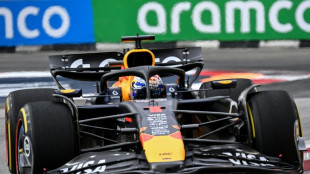
-
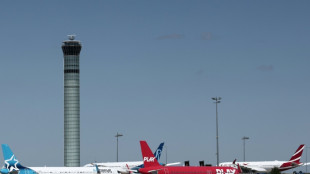 French air traffic controllers cancel three-day strike
French air traffic controllers cancel three-day strike
-
'A bit unusual': Russia's Sochi grapples with Ukrainian drones

-
 Test skipper Gill replaces Rohit as India ODI captain
Test skipper Gill replaces Rohit as India ODI captain
-
Israel troops still operating in Gaza after Trump, hostage family appeals
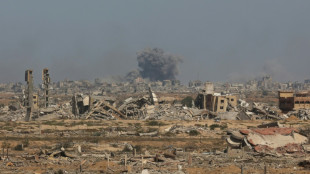
-
 Jadeja stars as India crush West Indies in first Test
Jadeja stars as India crush West Indies in first Test
-
Pogacar eyes 'explosive' Euros race with Vingegaard, Evenepoel

-
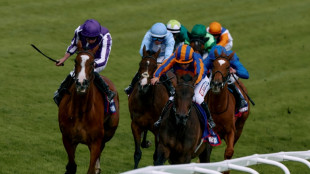 Minnie Hauk, Graffard, Japan vie for Prix de l'Arc de Triomphe glory
Minnie Hauk, Graffard, Japan vie for Prix de l'Arc de Triomphe glory
-
Three Japanese tales of Arc heartbreak

-
 Anisimova thrashes Gauff in 58 minutes to make China Open final
Anisimova thrashes Gauff in 58 minutes to make China Open final
-
Flights resume at Munich airport after second drone scare

-
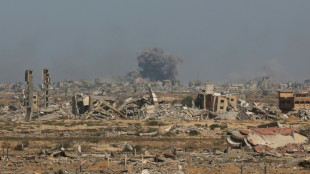 Hostage families urge immediate end to Gaza war
Hostage families urge immediate end to Gaza war
-
Czech ex-PM who wants to halt Ukraine aid set to win vote


NASA opens sample taken from the Moon 50 years on
The Apollo missions to the Moon brought a total of 2,196 rock samples to Earth. But NASA has only just started opening one of the last ones, collected 50 years ago.
For all that time, some tubes were kept sealed so that they could be studied years later, with the help of the latest technical breakthroughs.
NASA knew "science and technology would evolve and allow scientists to study the material in new ways to address new questions in the future," Lori Glaze, director of the Planetary Science Division at NASA Headquarters, said in a statement.
Dubbed 73001, the sample in question was collected by astronauts Eugene Cernan and Harrison Schmitt in December 1972, during the Apollo 17 mission -- the last of the program.
The tube, 35 cm long and 4 cm (13.8 inches by 1.6 inches) wide, had been hammered into the ground of the Moon's Taurus-Littrow valley to collect the rocks.
Of the only two samples to have been vacuum sealed on the Moon, this is the first to be opened.
It could as such contain gases or volatile substances (water, carbon dioxide, etc.)
And the aim is to extract these gases, which are probably only present in very small quantities, to be able to analyze them using spectrometry techniques that have become extremely precise in recent years.
In early February, the outer protective tube was first removed.
It was not itself revealed to contain any lunar gas, indicating that the sample it contained remained sealed.
Then on February 23, scientists began a weeks-long process aimed at piercing the main tube and harvesting the gas contained inside.
In the spring, the rock will then be carefully extracted and broken up so that it can be studied by different scientific teams.
The extraction site of this sample is particularly interesting because it is the site of a landslide.
"Now we don't have rain on the Moon," said Juliane Gross, deputy Apollo curator. "And so we don't quite understand how landslides happen on the Moon."
Gross said researchers hope to study the sample to understand what causes landslides.
After 73001, there will be only three lunar samples still sealed. When will they in turn be opened?
"I doubt we'll wait another 50 years," said senior curator Ryan Zeigler.
"Particularly once they get Artemis samples back, it might be nice to do a direct comparison in real time between whatever's coming back from Artemis, and with one of these remaining unopened core, sealed cores," he said.
Artemis is NASA's next moon mission; the agency wants to send humans back to the Moon in 2025.
Large amounts of gas should then be collected, and the experiment currently being conducted helps to better prepare for it.
C.Kovalenko--BTB


